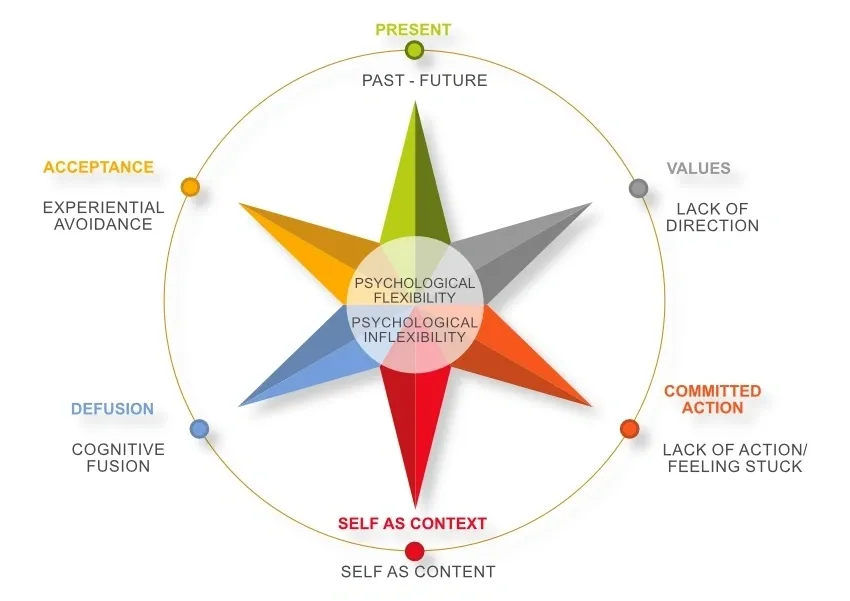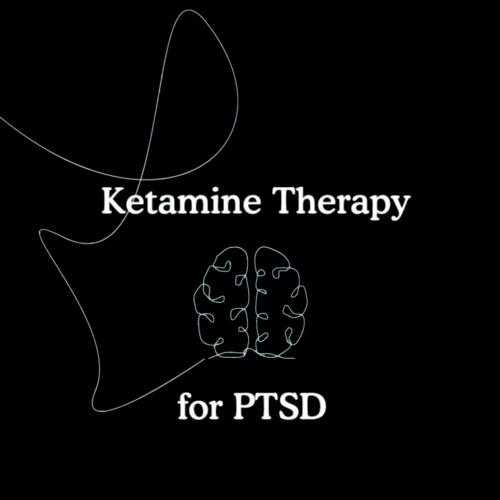Introduction – Understanding Modern Acceptance-Based Therapies
In a world where stress, anxiety, and self-doubt are constant companions, modern psychotherapy has evolved to go beyond just symptom reduction. One of the most influential developments in this evolution is Acceptance and Commitment Therapy (ACT) — a mindfulness-based, behavior-focused approach that helps people live richer, more meaningful lives even in the presence of pain or discomfort.

Unlike traditional therapies that emphasize changing negative thoughts, ACT focuses on accepting what cannot be controlled and committing to actions aligned with one’s values. It’s not about “getting rid of” pain — it’s about learning to carry it differently, with compassion and flexibility.
What Is Acceptance and Commitment Therapy (ACT)?
Acceptance and Commitment Therapy (ACT) is a third-wave cognitive-behavioral therapy, integrating mindfulness and behavioral change strategies to build psychological flexibility — the ability to stay open, present, and engaged in meaningful action, even when faced with challenging emotions or thoughts.
Developed in the 1980s by psychologist Dr. Steven C. Hayes and colleagues, ACT is grounded in Relational Frame Theory (RFT) — a behavioral model explaining how language and thought influence human suffering. Instead of battling unwanted internal experiences, ACT teaches individuals to accept them as natural parts of being human and to move forward guided by their values.
At its core, ACT encourages six interconnected processes:
- Acceptance
- Cognitive Defusion
- Present-Moment Awareness
- Self-as-Context
- Values Clarification
- Committed Action
Together, these form the foundation of a balanced, flexible, and mindful life.
The Philosophy Behind ACT: Acceptance Over Avoidance
Humans naturally seek to avoid pain — physical or emotional. However, avoidance often deepens suffering. ACT challenges this instinct by teaching acceptance, not as resignation, but as willingness to experience life fully, even its difficult moments.
This philosophy rests on two key ideas:
- Suffering is universal, and avoidance increases it.
- Values give pain meaning, turning discomfort into a path toward growth.
For example, a person may feel anxious before public speaking. Instead of suppressing the anxiety, ACT helps them acknowledge it, breathe through it, and speak anyway — because their value of growth or contribution outweighs temporary discomfort.
How ACT Differs from Traditional Cognitive Therapies
While ACT shares ancestry with Cognitive Behavioral Therapy (CBT), the two differ in focus and technique.
| Aspect | CBT | ACT |
|---|---|---|
| Goal | Identify and replace distorted thoughts | Accept thoughts and reduce their control |
| Approach | Change thinking to change feelings | Change relationship with thoughts |
| Primary Focus | Cognitive restructuring | Mindfulness and value-based action |
| View of Thoughts | Some are irrational and must be corrected | Thoughts are mental events, not truths |
In CBT, a person might challenge the thought “I’m a failure” with evidence. In ACT, the person observes that thought, acknowledges it as “just a thought,” and continues acting in line with their values — such as perseverance or learning.
Is ACT More Effective Than CBT?
Comparing ACT vs CBT depends on context. Both therapies are evidence-based and effective, but their strengths differ.
- CBT excels in short-term symptom relief for conditions like phobias or panic disorder.
- ACT is often more effective for chronic pain, anxiety, depression, and stress-related disorders, where struggle with internal experiences is central.
Meta-analyses in journals such as Behavior Research and Therapy and The Lancet Psychiatry show that ACT performs as effectively as CBT for many mental health conditions and sometimes yields better long-term outcomes due to its emphasis on flexibility and self-compassion.
ACT’s power lies in teaching individuals that peace doesn’t come from eliminating pain — it comes from changing how we respond to it.
What Are the 6 Steps of Acceptance and Commitment Therapy?
The six core processes of ACT are the framework for building psychological flexibility. These are sometimes referred to as the six steps or “pillars” of ACT:
1. Acceptance
Instead of resisting difficult feelings (fear, sadness, guilt), ACT encourages accepting them fully and making space for them. Acceptance is not approval; it’s the recognition that discomfort is part of the human experience.
2. Cognitive Defusion
Defusion means “separating” from thoughts rather than fusing with them.
For example, instead of saying “I’m not good enough,” ACT teaches, “I’m having the thought that I’m not good enough.”
This linguistic shift weakens the thought’s power.
3. Being Present
Mindfulness — or conscious awareness of the present moment — helps individuals stay grounded instead of ruminating on the past or worrying about the future.
4. Self-as-Context
Also called “the observing self,” this principle helps individuals see themselves as the space in which experiences occur, not the experiences themselves. You are not your thoughts; you are the one noticing them.
5. Values Clarification
Values are guiding principles — what truly matters to you. Clarifying them creates direction for decision-making.
Examples: compassion, honesty, family, creativity, or health.
6. Committed Action
Once values are clear, ACT emphasizes taking consistent, concrete steps aligned with them, even in the face of fear or uncertainty.
Change happens through behavior, not mere insight.
Together, these six steps create the hexaflex model — ACT’s central diagram representing psychological flexibility.
What Are the 4 A’s of Acceptance and Commitment Therapy?
While the six processes form ACT’s core, some clinicians summarize ACT skills as the “Four A’s” — a simplified framework for clients:
- Acknowledge – Recognize and name your thoughts and emotions.
- Allow – Let them exist without judgment or resistance.
- Assess – Identify your underlying values guiding your desired response.
- Act – Take mindful, value-driven action despite discomfort.
The 4 A’s help translate theory into daily practice, allowing individuals to navigate emotional moments gracefully while staying aligned with what truly matters.
Core Principles of Psychological Flexibility
Psychological flexibility is the ability to adapt to situations, stay present, and choose actions aligned with values, even in the face of distress. It’s the hallmark of mental health, according to ACT research.
This flexibility contrasts with psychological rigidity, where people are trapped in avoidance, self-judgment, or overthinking. ACT’s mission is to expand flexibility so individuals can live fully and authentically, rather than merely avoiding pain.
Common Techniques Used in ACT
🔹 Cognitive Defusion Exercises
Techniques like saying thoughts in a silly voice or visualizing them as clouds passing by reduce their power.
🔹 Mindfulness Practice
Paying attention to breathing, body sensations, or surroundings anchors awareness in the present.
🔹 Values Mapping
Therapists often use “values cards” or guided reflection exercises to clarify what gives meaning to a client’s life.
🔹 The “Leaves on a Stream” Exercise
Imagine placing each thought on a floating leaf and letting it drift away. This promotes detachment and calm.
🔹 The “Passengers on the Bus” Metaphor
You (the driver) have passengers (thoughts and emotions) shouting at you. ACT teaches you to keep driving toward your destination — your values — no matter how loud they get.
Practical Applications of ACT in Everyday Life
ACT’s flexibility makes it applicable beyond clinical settings:
- At work: Managing performance anxiety or burnout by accepting stress and focusing on professional values like integrity or creativity.
- In relationships: Practicing acceptance of differences while committing to empathy and open communication.
- For personal growth: Using mindfulness and values to pursue fulfilling goals even when fear or doubt arises.
- For physical health: Managing chronic pain or illness by reducing psychological struggle around symptoms.
ACT empowers people to live value-driven lives, not avoidance-driven ones.
ACT for Anxiety, Depression, and Stress Management
Anxiety
ACT helps anxious individuals recognize that fear is a natural response and teaches them to act courageously despite it. Rather than chasing certainty, they learn to live effectively with uncertainty.
Depression
In depression, people often withdraw from meaningful activities. ACT reverses this through behavioral activation, encouraging small, value-consistent steps even when motivation is low.
Stress and Overthinking
ACT reduces the impact of rumination by fostering mindfulness and acceptance — lowering cortisol levels and improving resilience.
Studies in Journal of Consulting and Clinical Psychology show ACT’s effectiveness in reducing anxiety and depressive symptoms across diverse populations.
Strengths and Limitations of ACT
Strengths
- Holistic and mindfulness-based approach
- Effective for diverse mental and physical health conditions
- Empowers self-compassion and long-term emotional resilience
- Emphasizes living meaningfully rather than symptom elimination
Limitations
- Requires consistent practice; not a quick fix
- May feel abstract to clients expecting traditional “talk therapy”
- Works best with therapist guidance, though self-help versions exist
Overall, ACT’s strengths far outweigh its limitations, especially in cultivating lasting well-being.
Evidence and Research Supporting ACT
ACT’s scientific foundation is robust.
- Over 900 peer-reviewed studies have validated its principles.
- It’s recognized by the American Psychological Association (APA) as an evidence-based treatment.
- Research demonstrates ACT’s success with chronic pain, substance use, workplace stress, PTSD, and anxiety disorders.
For example, a 2021 meta-analysis in Frontiers in Psychology found that ACT significantly improved quality of life, psychological flexibility, and emotion regulation across age groups and cultures.
How to Practice ACT Techniques at Home
- Mindful Awareness: Spend five minutes observing your breath and thoughts each morning.
- Values Reflection: Ask, “What truly matters to me today?”
- Acceptance Routine: When discomfort arises, name it, breathe, and allow it to exist.
- Committed Action: Choose one small behavior that reflects your values, no matter how you feel.
- Evening Review: Reflect on whether your actions today aligned with your values, not just your emotions.
Consistency with these steps strengthens mental resilience and emotional balance over time.
Final Thoughts – Living a Values-Based, Mindful Life
Acceptance and Commitment Therapy (ACT) represents a compassionate evolution in psychological care. It teaches us that peace is not found in control, but in acceptance and alignment with what truly matters.
By learning to unhook from our thoughts, accept our inner experiences, and commit to meaningful action, we cultivate a life of depth, purpose, and authenticity — a life not free from pain, but rich in meaning.



